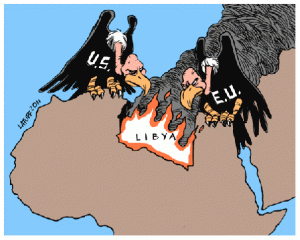When one thinks of the "United States" one most probably thinks of the United States of America. The namely "translates" to "the union of countries on the American continent." The name is that way because the original idea when founding the country was a federal system where highly autonomous units, basically their own country in terms of domestically, while united in international and interstate matters.
However, the United States of America was not the only country to be called "the United States." There were others which shared federalism and in some cases freedom.
United States of Belgium
Both founded and collapsed by 1790, the United States of Belgium was the first sense of independence Austrian Netherlands (present-day Belgium) had. The Enlightenment republic rebelled against the Holy Roman Empire's effort to centralize political control in the region. The rebels modeled their republic on the Dutch Republic and the United States of America. However, Austrian troops of the Holy Roman Empire managed to crush the rebellion within months.
Republic of the United States of Brazil
Unlike other United States, the Republic of the United States of Brazil was never a true democracy. The elections were rigged and the republic was little different from the Empire of Brazil which the republic replaced in 1889. The federal system was meant to give states freedom from the central government but the federal government was quickly usurped by oligarchs from the most populaces coastal states. The republic eventually fell into control of President Getúlio Vargas who in the 1930s turned the country into the quasi-fascist New State. The Republic of the United States outlasted Vargas, however, and existed until the military coup of 1964.
The United States of Colombia
This United States was the first iteration of Colombia to be called "Colombia." The system was meant to give each Colombian state more autonomy in order to limit the amount of civil wars in the country. However, the United States, which lasted from 1863 until 1886, was unable to stop the on-again, off-again fighting and was reformed as the Republic of Colombia.
The Republic of the United States of Indonesia
The Republic of United States of Indonesia was an effort by the Dutch to save face in the late 1940s after their defeat in quelling Indonesian rebels. The United States were a combination of Sukarno's Republic of Indonesia, liberated Java and Sumatra, and various other islands which were established as states by the Dutch. However, the states did not care of the Dutch established boundaries and dissolved themselves into the Republic of Indonesia within the first six months of 1950.
The United States of the Ionian Islands
The United States of the Ionian Islands were a British protectorate which was located off the western coast of Greece. Originally a republic, it was first a Ottoman then French protectorate where Greeks enjoyed the first freedom from Turkish rule since the Ottoman conquests. A British commissioner oversaw a local Parliament. The United States lasted from 1815 until 1864 when they were absorbed into the Kingdom of Greece.
The United States of Venezuela
The United States of Venezuela was founded out of the Conservative versus Liberal war of the 1850s and 1860s. The Liberals won out defeating the land-owning Conservatives and issued in an initial wave of land reform and decentralization, hence the United States. However, like most Liberal parties of the old Latin America, the Liberals of Venezuela eventually became the new oligarchs. The United States of Venezuela lasted until 1953 when military dictator Marcos Pérez Jiménez renamed the country to the Republic of Venezuela as an emphasize to his centralized control.
The United States of Stellaland
The United States of Stellaland was the union of two Boer, Africans of Dutch descent, republics: Stellaland and Goshen, formed in 1882. The United States based much of its laws off the major Boer republic the South African Republic. The United States was forcibly annexed by the United Kingdom in 1885 and eventually became part of Botswana.











